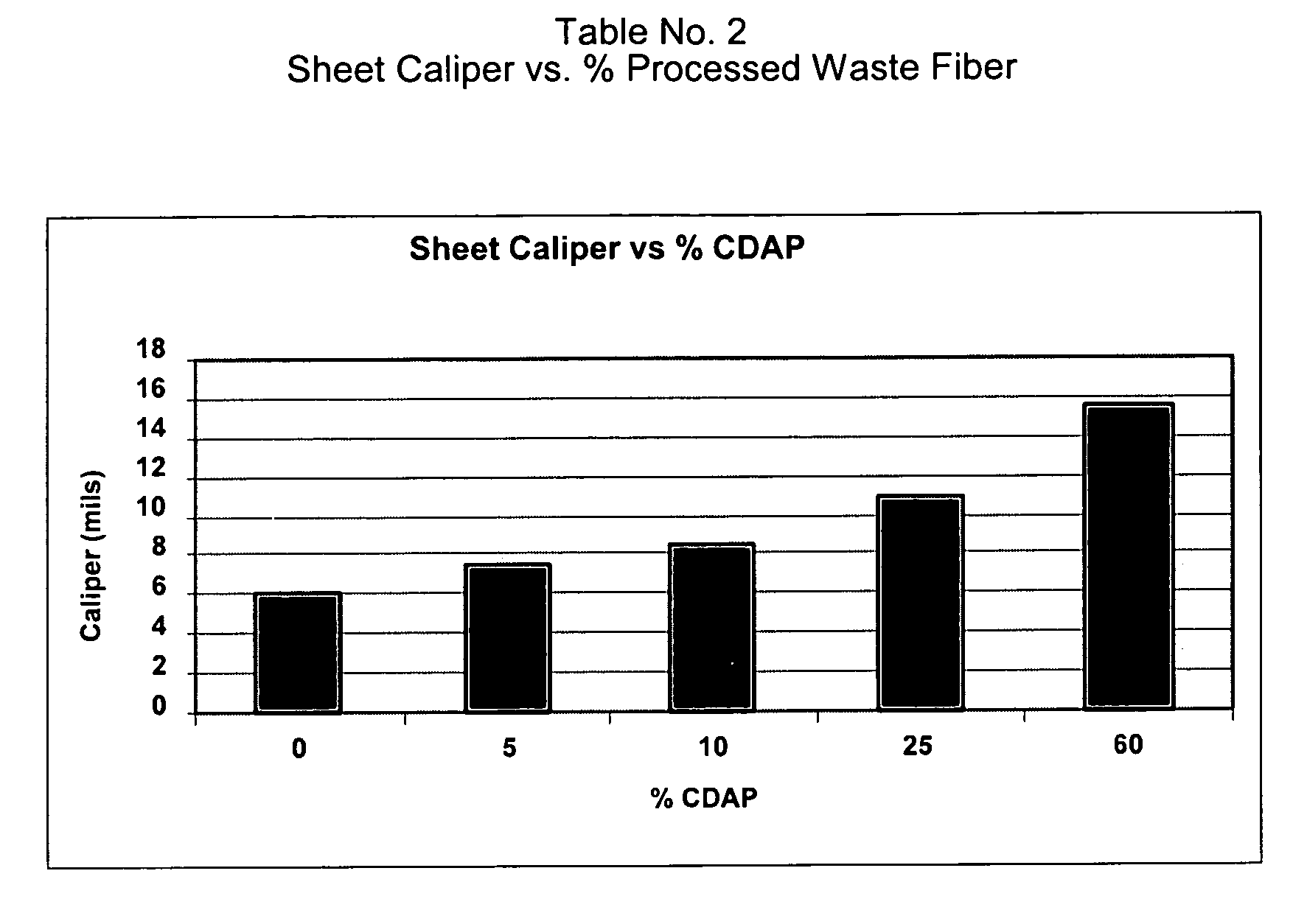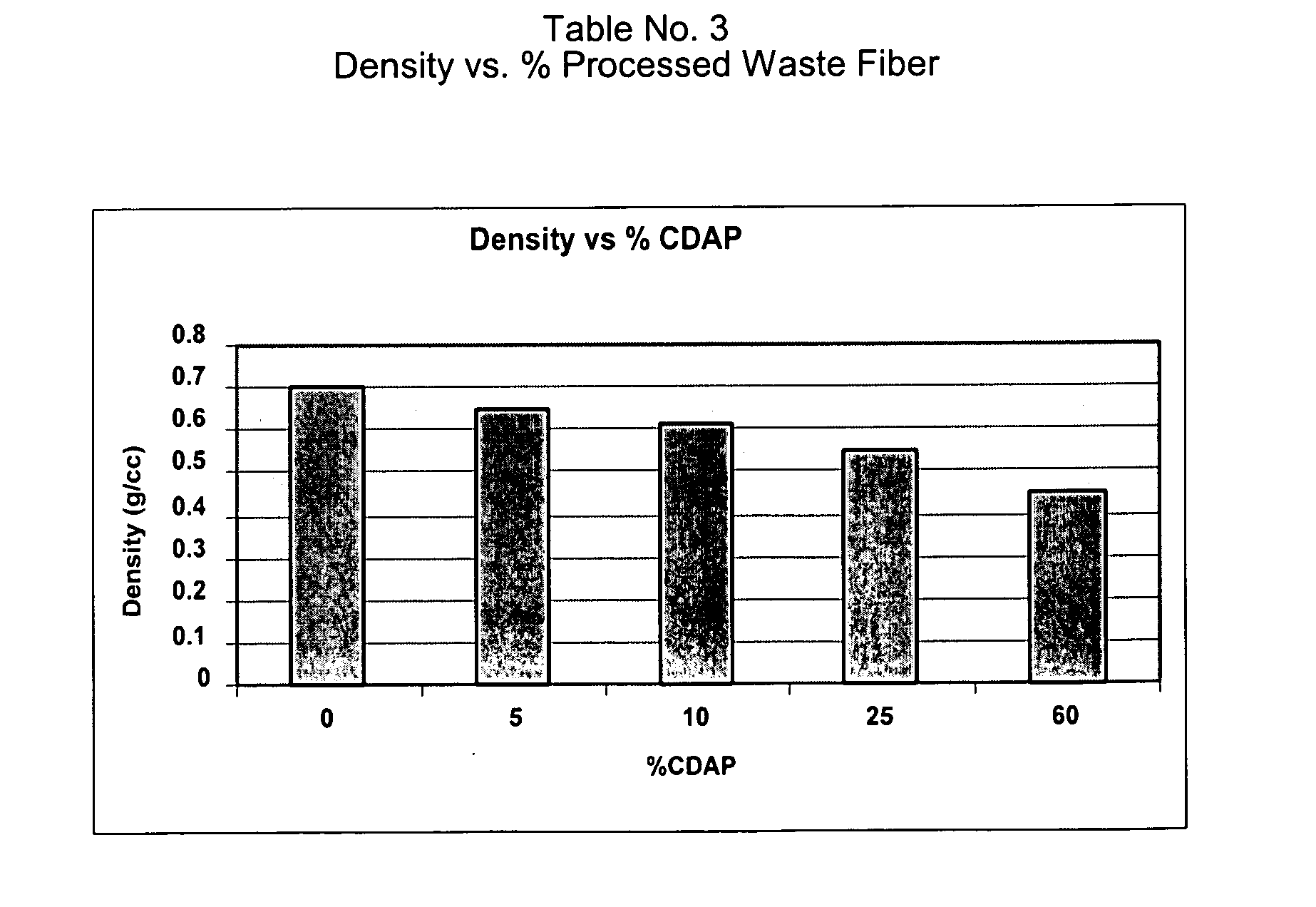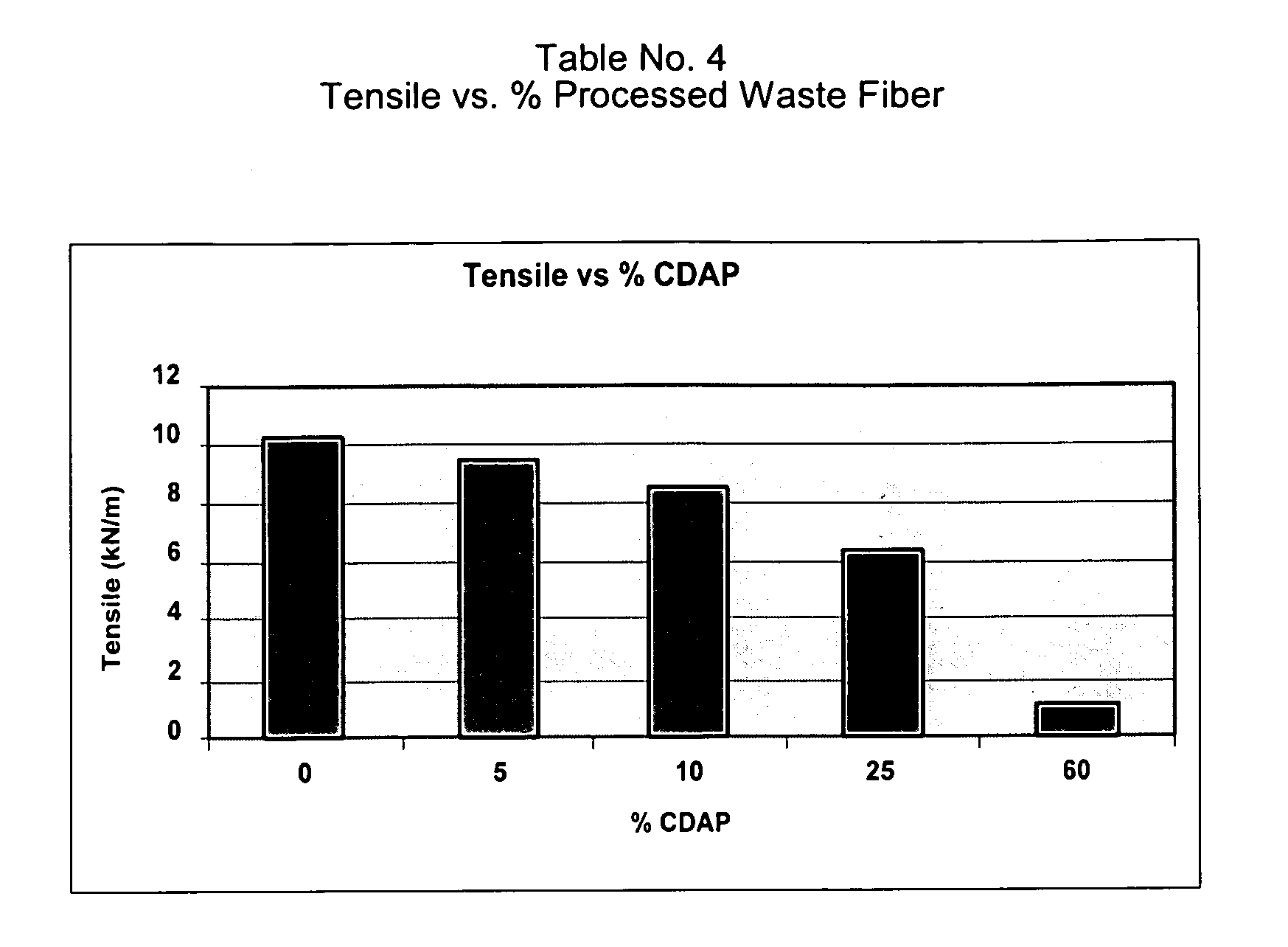Process for the conversion of cellulose acetate waste fibers into a suitable form for paper production and the resultant paper products
a technology of cellulose acetate and waste fibers, which is applied in the field of process for the conversion of cellulose acetate waste fibers into a suitable form for paper production and the resultant paper products, can solve the problems of limiting the extent of the addition of artificial fibers to paper, increasing the cost of disposal and decreasing landfill space, and undesirable recycling methods
- Summary
- Abstract
- Description
- Claims
- Application Information
AI Technical Summary
Benefits of technology
Problems solved by technology
Method used
Image
Examples
example 1
[0031] Waste cellulose acetate fibers (filter rods) were shredded using a high speed rotary cutter which included a screen retention basket with openings (holes) of 0.375 inch diameter. The fibers produced from the cutting / shredding process contained substantial crimp. The average length of the fibers was approximately 7mm. The fibers had a denier of 3 grams per 9,000 meters.
[0032] Papers containing the mechanically altered plug room waste fibers were produced using lab-scale Canadian Standard Handsheet equipment owned by Herty Foundation located in Savannah, Ga. Batches with a furnish ratio of Hardwood, % Astracel=50% of wood, Softwood, % Albacel=50% of wood were prepared, confricated and papered out. The processed cellulose acetate waste fibers were added to the furnish prior to confrication a various desired levels. Handsheets with the various levels of processed waste cellulose acetate were prepared for physical property comparison. Test results follow:
Table No. 1.
Processed Wast...
PUM
| Property | Measurement | Unit |
|---|---|---|
| Fraction | aaaaa | aaaaa |
| Linear density | aaaaa | aaaaa |
| Linear density | aaaaa | aaaaa |
Abstract
Description
Claims
Application Information
 Login to View More
Login to View More - R&D
- Intellectual Property
- Life Sciences
- Materials
- Tech Scout
- Unparalleled Data Quality
- Higher Quality Content
- 60% Fewer Hallucinations
Browse by: Latest US Patents, China's latest patents, Technical Efficacy Thesaurus, Application Domain, Technology Topic, Popular Technical Reports.
© 2025 PatSnap. All rights reserved.Legal|Privacy policy|Modern Slavery Act Transparency Statement|Sitemap|About US| Contact US: help@patsnap.com



